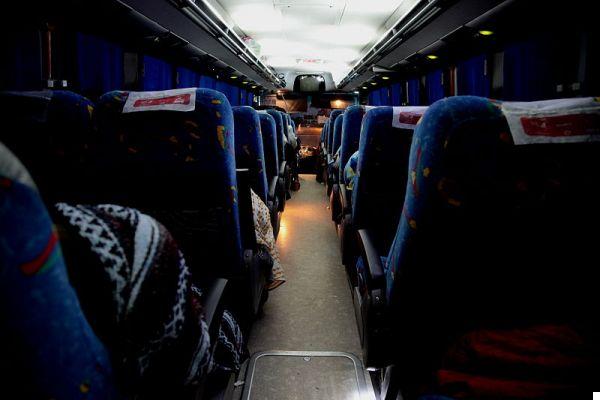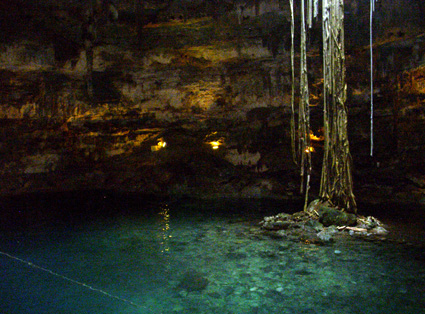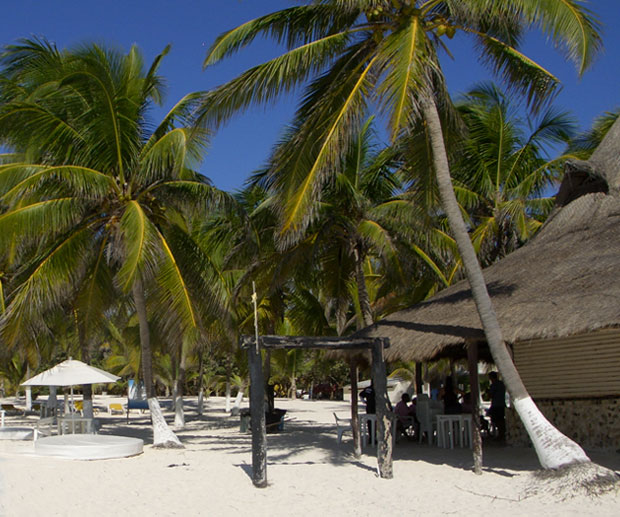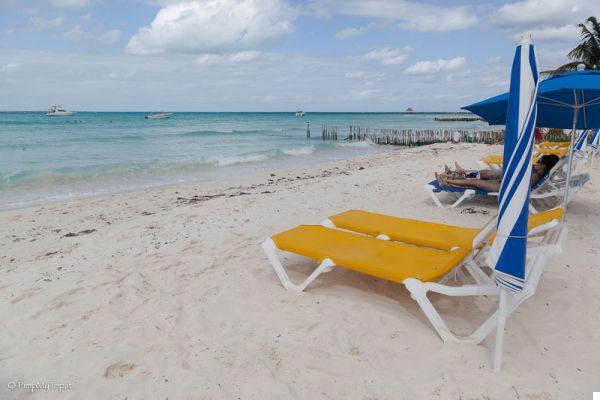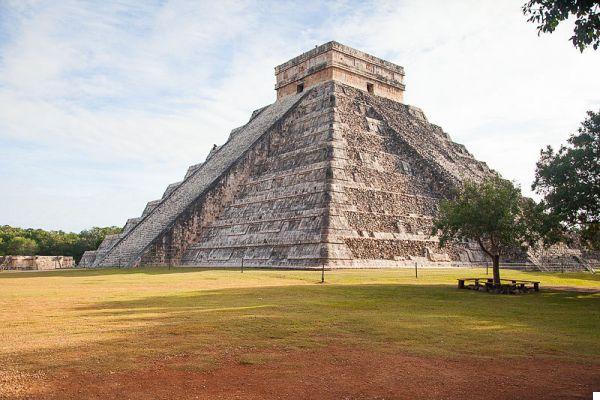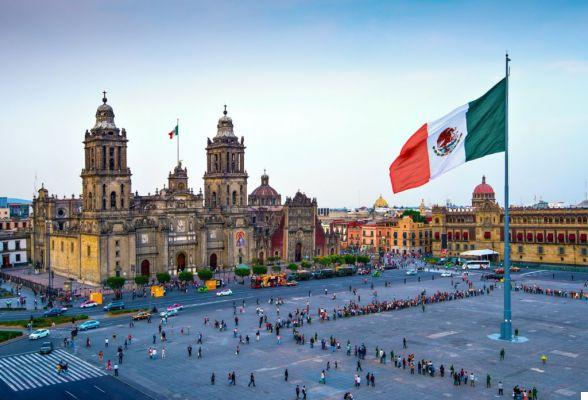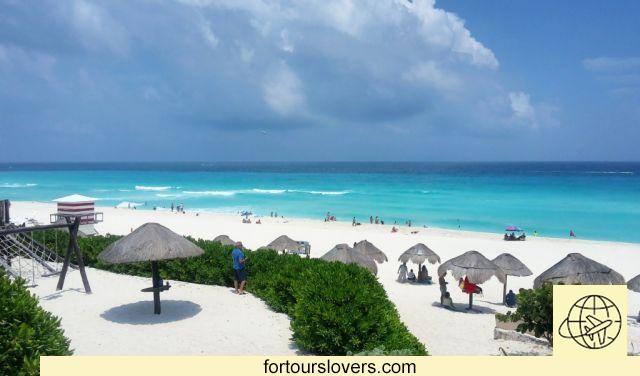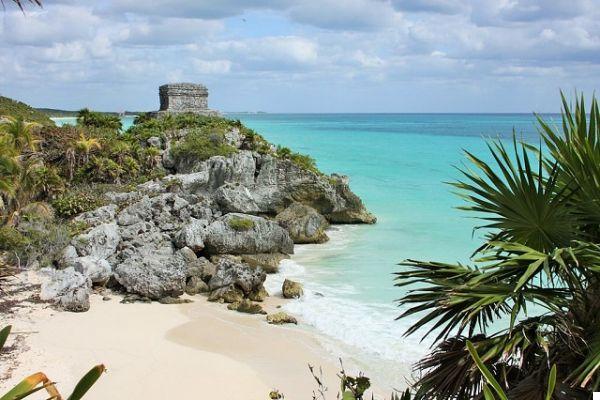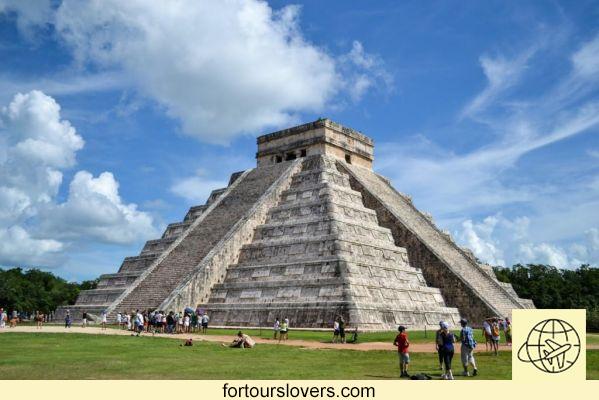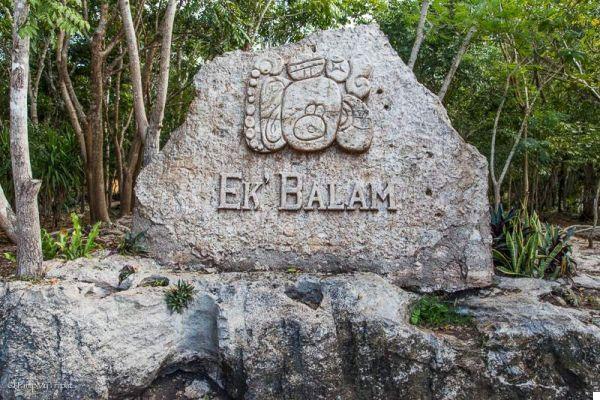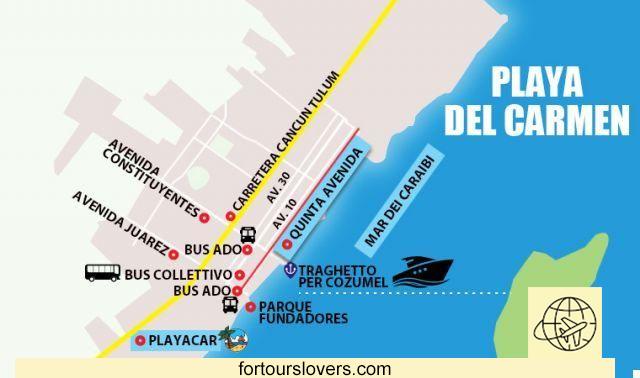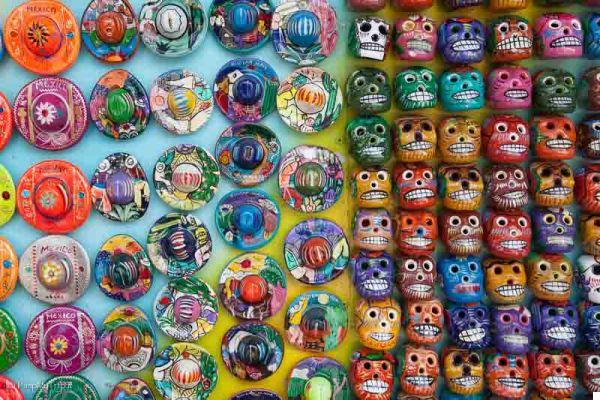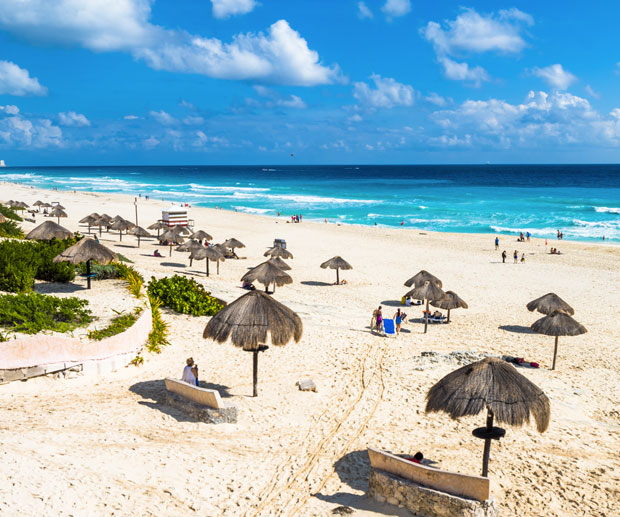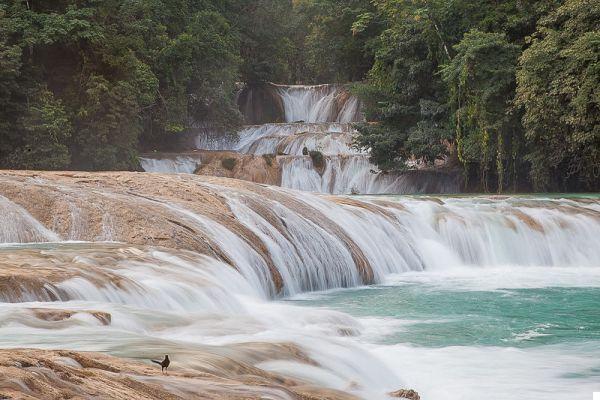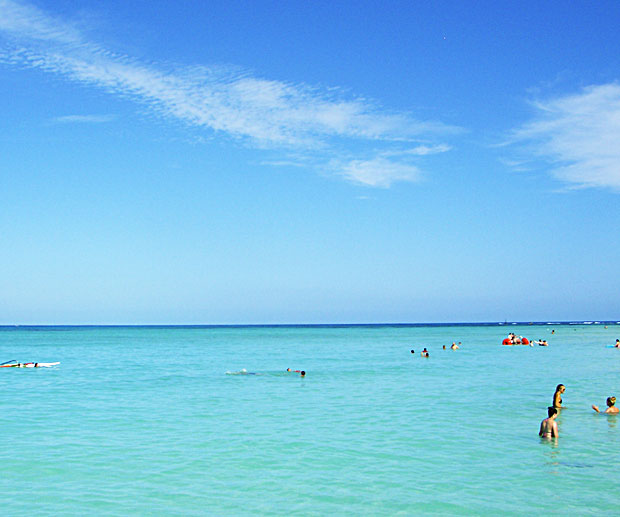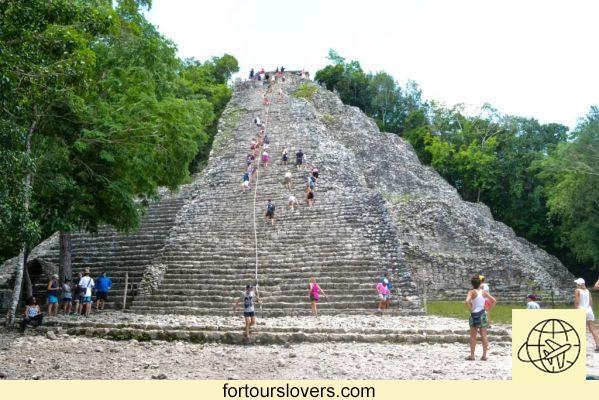Il Dia de los Muertos is undoubtedly one of the Mexican holidays best known ever: can you imagine an event celebrated with joy in all the houses, streets, squares and cemeteries of the town?
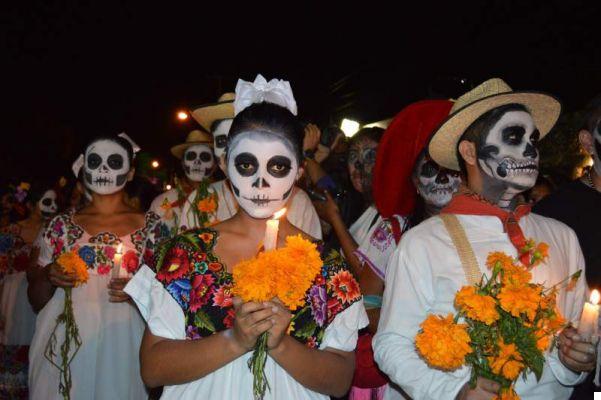
Dia de Los Muertos is a tradition celebrated throughout Mexico
Il Dia de los Muertos, or Day of the Dead, in fact, it is a celebration not only of loved ones who have gone away but also of life.
Although the party was born in Mexico, is celebrated throughout Latin America with bright colors, calaveras (skulls) and calacas (skeletons).
1 - It's not Halloween
Il Day of the Dead it's not a Mexican version of Halloween. Although they have some common characteristics, the two holidays differ greatly in tradition and meaning.
Of course, the common theme is that of death and they are both based on the idea that spirits return at that time of year but from the point of view of meaning the two holidays are completely different.
The habits around Halloween derive from the idea that spirits are malevolent (children were disguised not for a party but so as not to be recognized and damaged in some way), while in the festivities of Dia de Los Muertos, spirits are welcomed with joy: are family members who return to the living once a year, the November 2.
While Halloween is therefore a dark night of terror and mischief, the Day of the Dead celebrations take place for two days in an explosion of color and joie de vivre: all over Mexico is celebrated wearing colorful costumes, parties and dances are held and offerings are made to deceased loved ones.
2 - It is not (entirely) of Mexican origin
The dia de Los Muertos has ancient origins, in Mesoamerica with the Aztecs, Toltecs and other ancient cultures who considered mourning disrespectful for the dead.
For these pre-Hispanic cultures, in fact, death was a natural phase in the long continuum of life: the dead were still members of the community, kept alive in memory and spirit and which during the Día de los Muertos, returned to Earth.
From another part of the globe, in Europe, The Day of the Dead originated during the ninth century and was introduced to Latin America by the Spanish Conquistadores. This festival merged perfectly with the ancient conception of death that they already had in the Aztec culture: the result was a mix of several different cultures.
3 - it is a UNESCO World Heritage Site
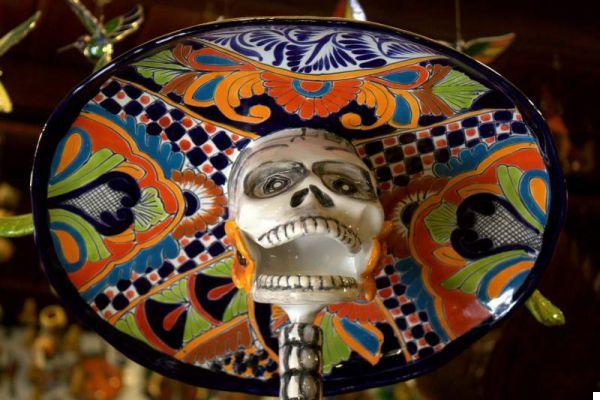
In Mexico, you can find souvenirs in the shape of skulls and skeletons everywhere
Thanks to the efforts ofUnited Nations Organization (Unesco) for education, science and culture, the term "cultural heritage" is not limited simply to monuments but it also includes living expressions of cultural traditions handed down from generation to generation.
In 2008, UNESCO recognized the importance of Día de los Muertos by adding the holiday to its list of intangible cultural heritage of humanity.
4 - it's a social party
Dia de Los Muertos is an extremely social party: crowds of partying people pour into the streets and public squares at all hours of the day and night. Dressing up like skeletons is part of the fun.
People of all ages have their faces artfully painted to look like skulls and, imitating calavera Catrina, they wear fancy, elegant clothes and large hats.
5 - The focus is the altar
The focus of the celebration is a Altar, or ofrenda, which is set up not only in private homes and cemeteries, but also in squares.
Contrary to what one might think, these are not altars to worship, but represent the door between life and death: they have the purpose of welcoming the spirits into the kingdom of the living and as such, they are loaded with offerings, water to quench their thirst after the long journey, food,
Each decorative element has a very specific meaning.
Il chopped papacy, layers of paper perforated or cut out in the shape of a skeleton, represents the wind and the fragility of life but its double color (usually yellow and purple) also indicates the duality of life and death. The seeds represent the Earth, the candles the fire.
The smoke of the incense, made from tree resin, transmits prayers and purifies the air around the altar.
Other items that are placed on the altar include sugar skulls, often with the person's name inscribed at the top, the bread of the dead, a special bread that is made especially for the season, and cempasuchil (marigolds) that bloom at this time of year.
In some villages, marigold petals are placed to create a path from the place of cultivation to the altar in order to lead souls to their home.
In some communities, it is customary to spend the whole night in the cemetery, but it is not experienced as a sad thing, rather as a party: you have dinner, play music, talk and drink all night.
6 - Meaning of the Calaveras
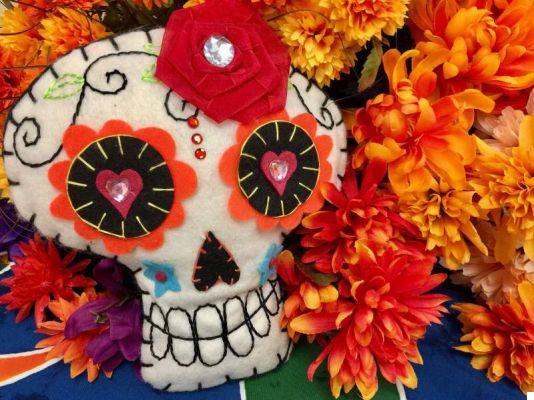
I skulls are one of the symbols of the Day of the Dead
So what is a skull? First of all, calavera is the Spanish word for skull, but in Mexican culture it has a much deeper meaning.
The calaveras you see all over Mexico, they are recurrent in the drawings and engravings of the pre-Hispanic ruins of the Aztecs and Maya to this day where they are represented in graffiti, in clothes, in jewelry and in the tattoo.
Although it is possible to see calaveras throughout the year, they are seen more often during the Los Dias de Los Muertos season. The calaveras remind us of celebrate our life and mortality, to look to the past and the future, but staying in the present.
They are a way to recognize that life is sacred, and that death, "La Muerte", is just another rite of passage, no less sacred than life itself.
Death is also alive. The inevitable is not to be feared or avoided: it must be embraced and celebrated. More than anything else, calaveras remind us to live
every moment to the fullest, to face our mortality with a smile, with courage and to believe in immortality.
During the Days of the Dead i skulls yes mangiano!
In fact, calaveras are also candy in the shape of skulls. They are originally made of white sugar, but today they are also made with chocolate or anything else sweet.
these sweet calaveras they are also placed as an offering on the altar of the dead.
In short, it is a delightful thing, done both for the living and for the spirits.
However, there is also a second type of calavera: a humorous poem that tells a story.
With these popular verses you joke about living or deceased politicians, famous people or loved ones while making fun of death.
In short, write calaveras for your best friends to show them how much you love them!
Ah and don't forget to include la Muerte!
7 - Who is the Catrina Skull?
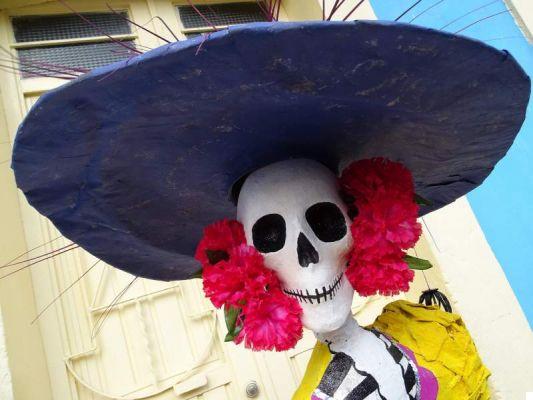
La Calvera Catrina is the Lady of the Day of the Dead: she is represented in French clothes and with a large hat
The first appearance of the Lady of Death, or the omnipresent image of the Dia de Los Muertos, dates back to the Aztec Goddess Mictecacihuatl, queen of the Underworld who had the role of protecting the bones of the dead.
Its second appearance in Mexican culture is a much closer to our modern version Calavera Catrina. It was created by the cartoonist José Guadalupe Posada in an etching (an engraving technique) “La Calavera Catrina”, created around 1910-1913 and which was originally known as “La Calavera Garbancera”.
Dressed in French clothes, the Calavera Catrina was created as a satirical image: the artist aimed to mock indigenous Mexicans who sought to emulate the sophistication of European style.
“Todos somos calaveras”, a quote commonly attributed to Posada, means “we are all skeletons”: under all the traps created by man, we are all the same.
8 - There is also the food of the Dead
Surely after the long journey back to their living family, the spirits are very hungry and thirsty.
At least this is the traditional belief in Mexico: some families even place their favorite dish of their loved ones on the altar.
Il Bread of the Dead, or bread of the dead, is a typical sweet bread (pan dulce), often characterized by aniseed and decorated with bones and skulls made with pasta. The bones are sometimes arranged in a circle, as in the circle of life.
Sugar skulls are part of a tradition carried by XNUMXth-century Italian missionaries. .
Among the drinks, we find the pulque, a sweet fermented drink made from the sap of the agave; atole, a thin hot porridge made with cornmeal, with unrefined brown sugar, cinnamon and vanilla added e hot chocolate.
9 - It is celebrated in different ways
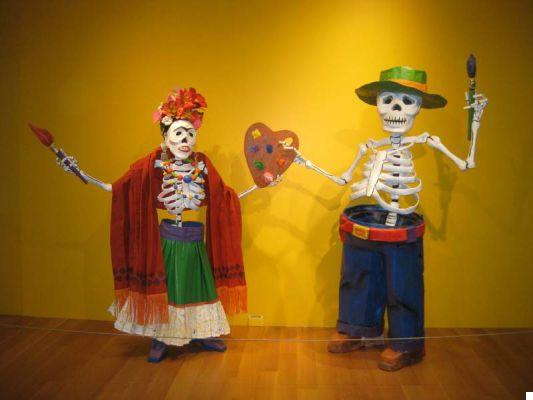
Mexican Schletri: she represents Frida Khalo
Countless communities in Mexico celebrate the Day of the Dead, but the way of celebrating and customs differ depending on the pre-Hispanic culture of the region.
Holidays tend to be more colorful in the southern region, particularly in the states of Michoacán, Oaxaca and in Chiapas.
In rural areas, the celebrations are mostly solemn while in the larger cities they are much more festive to the point of becoming, at times, even irreverent.
10 - Let's celebrate!
Yep, the Mexican community used to celebrate Dia de Los Muertos here too. There are many events that are organized in various cities of our boot.
Where to spend the Dia de Los Muertos in Mexico
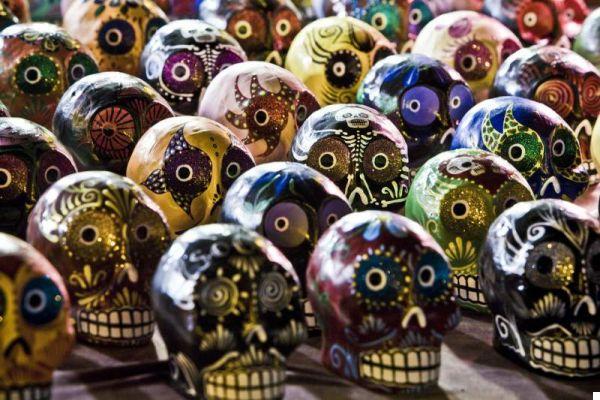
Decorated sugar sweets calaveras
Dia de Los Muertos is celebrated all over Mexico. These three destinations are among the most recommended:
Patzcuaro
One of the most exciting Day of the Dead celebrations is held every year in Patzcuaro, a municipality in the state of Michoacán about 225 miles west of Mexico City.
Janitzio is a small island in Lake Patzcuaro and is easily accessible by boat
from Patzcuaro. The island is home to the Purepecha indigenous group who have elaborate rituals for this day. There are processions and music, folk dances are performed and families gather in the cemetery to spend the night singing. Perhaps the most impressive sight is the fishermen in their rowboats with the torches illuminating the lake.
Mixquic
Located in the Delegation of Tlahuac a Mexico City (southwest of downtown Mexico City) Mixquic it was engulfed by the urban sprawl of the megalopolis, but retains the feel of a rural village with strong indigenous roots.
The stalls are set up in the days preceding the celebrations. A procession crosses the city with a cardboard coffin and leads to the cemetery where a candlelit vigil is held.
Merida
Se you are in the Yucatan Peninsula, don't miss the party in the city of Merida.
In the Mayan language, the Day of the Dead celebrations are referred to as Hanal Pixan, which means "feast for souls": families come together to prepare a special dish of chicken seasoned and wrapped in banana leaves (called pibipollo), which is cooked underground in a pit.
The dish is appreciated both by spirits, who are believed to consume its essence, and by the living, who love the taste!
Others articles about Mexico you might like:
- Dos and Don'ts in Playa del Carmen
- Isla Mujeres, consigli for the visit
- Adventure travels in Chiapas, from the ruins of Palenque to the waterfalls of Agua Azul
For a personalized and tailor-made itinerary fill out the form which you can find by clicking on the blue button below and telling us a little about yourself and the journey you would like to experience.
One of our expert Mexico consultants will contact you within 48 hours to assess your needs and create the perfect tailor-made itinerary for you! If you don't receive the email please check your spam folder, we may have ended up there.Yes, I want my own tailor-made itinerary!




